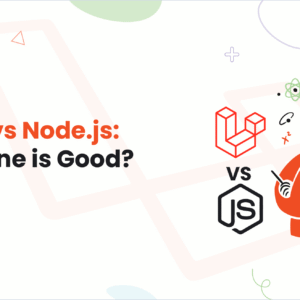In today’s hyper-connected world, customer expectations have never been higher. Consumers demand seamless, consistent, and personalized interactions across every touchpoint, whether they’re browsing a website, sending a tweet, or making a phone call. This expectation has catalyzed the shift towards Omnichannel Customer Experience (OCE) strategies, moving beyond mere multi-channel presence to create a unified and continuous customer journey. At the heart of achieving this elusive ideal lies a rapidly evolving technology: the AI voice assistant. Specifically, the advent of sophisticated AI powered voicebot for call centers and Gen AI Voice Bot platforms is revolutionizing how businesses interact with their customers, making them indispensable components of a truly integrated OCE.
Understanding Omnichannel Customer Experience
Before delving into the specifics of AI voicebots, it’s crucial to distinguish omnichannel from its predecessor, multi-channel. While multi-channel simply means a business has multiple ways for customers to interact (phone, email, social media, chat), omnichannel implies that these channels are fully integrated and work in harmony. The customer’s journey flows effortlessly from one channel to another, with context and information retained at every step. For example, a customer might start a query on a mobile app, continue it via web chat, and then resolve it with a phone call, all without having to repeat their issue or provide the same personal details multiple times. The goal is a holistic, customer-centric experience that recognizes the customer, not the channel, as the focal point.
However, achieving this seamless integration is a significant challenge for many organizations, often hampered by siloed systems and disparate data. This is precisely where advanced AI technologies, particularly voicebots, offer a transformative solution.
The Evolution of Voicebots: From IVR to Gen AI
The concept of automated voice interaction is not new; traditional Interactive Voice Response (IVR) systems have been a staple of voicebot for customer service for decades. Yet, these early systems were often clunky, menu-driven, and frustrating for users, leading to the infamous “press 1 for sales, press 2 for service” maze. Their limitations stemmed from a lack of true intelligence – they couldn’t understand natural language, interpret intent, or retain context.
The paradigm shifted dramatically with the advent of AI voice assistant technology powered by advancements in Natural Language Processing (NLP) and Machine Learning (ML). These first-generation AI voicebots could understand spoken requests, answer common questions, and even perform basic transactions. However, the true game-changer has been the emergence of Gen AI Voice Bot technology.
Generative AI takes voice interaction to an unprecedented level. Unlike their predecessors, Gen AI voicebots don’t just match keywords or follow predefined scripts; they understand the broader context, infer intent even from ambiguous statements, and generate remarkably human-like, coherent, and personalized responses. They can engage in free-flowing conversations, ask clarifying questions, handle complex multi-turn dialogues, and even detect sentiment, adapting their tone and approach accordingly. This leap in capability makes them ideal for handling a diverse range of customer inquiries and integrating seamlessly into complex omnichannel strategies.
AI-Powered Voicebots: A Cornerstone for Call Centers
The impact of AI powered voicebot for call centers is particularly profound. Call centers, often the first point of contact for urgent or complex issues, frequently grapple with high call volumes, long wait times, and agent burnout. AI voicebots address these challenges head-on:
- 24/7 Availability and Instant Responses: Voicebots never sleep, offering round-the-clock support, which is critical for global businesses or those with customers in different time zones. They can provide instant answers to common FAQs, dramatically reducing wait times and improving immediate customer satisfaction.
- Handling High Volume and Routine Queries: A significant portion of call center inquiries are repetitive and provide straightforward answers (e.g., “What’s my account balance?”, “How do I reset my password?”, “What are your operating hours?”). AI voicebots can efficiently handle these high-frequency, low-complexity interactions, freeing up human agents to focus on more intricate, sensitive, or high-value customer issues that require empathic human intervention.
- Improved First Contact Resolution (FCR): By instantly providing accurate information and guiding customers through self-service options, voicebots can significantly boost FCR rates, leading to happier customers and reduced operational costs.
- Cost Efficiency: Automating routine tasks with voicebots leads to substantial cost savings by reducing the need for large numbers of human agents to handle simple queries.
- Scalability: Voicebots can scale instantly to handle unexpected spikes in call volume during peak seasons or unforeseen events, ensuring consistent service levels.
Integrating Voicebots into the Omnichannel Journey
The true power of AI voicebots in an OCE strategy lies in their ability to act as intelligent conduits, facilitating seamless transitions and maintaining context across different channels.
- Seamless Channel Switching: Imagine a customer researching a product on a company’s website. They might click on a “call us” button, and an AI voice assistant immediately picks up, already aware of the pages the customer was browsing. Or, if a customer starts a conversation with a chatbot and needs more personalized assistance, the voicebot can offer to transfer them to a live agent, providing the agent with the full transcript of the prior text chat. This eliminates the frustrating need for customers to repeat themselves.
- Proactive Engagement: Voicebots can be programmed to proactively reach out to customers via phone based on actions taken on other channels. For instance, if a customer abandons a shopping cart with high-value items, a voicebot could initiate a call to offer assistance or answer potential questions, driving conversion.
- Personalization at Scale: By integrating with CRM systems, customer profiles, and purchase history data from all channels, an AI voice assistant can offer highly personalized service. The bot can address the customer by name, reference past interactions, and provide recommendations or solutions tailored to their specific needs, enhancing the overall Omnichannel Customer Experience.
- Unified Data Collection and Insights: Every interaction a voicebot has, whether via phone or other voice-enabled devices, generates valuable data. This data, when combined with insights from chat, email, and social media interactions, provides a comprehensive 360-degree view of the customer. Businesses can then use this consolidated information to identify trends, optimize processes, and personalize future engagements across all channels.
- Consistency in Branding and Information: Voicebots are programmed with controlled vocabularies and brand guidelines, ensuring that the tone, language, and information provided are consistent across all touchpoints. This uniformity reinforces brand identity and builds customer trust.
Beyond Basic Support: Advanced Capabilities of AI Voice Assistants
Modern Gen AI Voice Bot platforms go far beyond simple Q&A. They are capable of:
- Complex Transaction Completion: Guiding customers through multi-step processes like booking appointments, processing returns, managing subscriptions, or even handling complex financial transactions.
- Sentiment Analysis and Intelligent Routing: Detecting frustration or urgency in a customer’s voice and intelligently routing them to a human agent, along with the captured context and sentiment, for immediate, empathetic assistance.
- Integration with Enterprise Systems: Connecting seamlessly with CRM, ERP, payment gateways, and knowledge bases to pull and push real-time information, enabling comprehensive service delivery.
- Multilingual Support: Offering assistance in multiple languages, broadening a company’s reach and enhancing global customer satisfaction.
- Proactive Information Delivery: Providing updates on order status, service disruptions, or personalized offers, often before the customer even thinks to inquire.
Challenges and Considerations
While the benefits are clear, implementing AI voicebots, especially within an Omnichannel Customer Experience framework, comes with its own set of challenges. Organizations must consider the initial investment in technology and integration, the need for continuous training and optimization of the AI models, and the crucial requirement to ensure a seamless human fallback option for complex or sensitive issues. Data privacy, security, and ethical considerations surrounding AI usage also remain paramount. The goal is not to replace human interaction entirely but to augment it, empowering agents and enhancing the customer journey.
The Future Landscape
The trajectory of AI voicebots suggests an even more integrated and intelligent future. As Gen AI Voice Bot technology continues to mature, we can expect hyper-personalization, predictive analytics guiding proactive outreach, and voicebots acting as central orchestrators of complex customer journeys. They will increasingly anticipate customer needs, offer solutions before problems arise, and facilitate truly intuitive interactions that blur the lines between human and automated service.
Conclusion
The Omnichannel Customer Experience is no longer a luxury but a necessity for businesses aiming to thrive in a competitive market. At its core, this strategy demands seamless integration, personalized interactions, and consistent service across every channel. AI powered voicebot for call centers and advanced Gen AI Voice Bot technologies are proving to be indispensable in achieving this strategic imperative. By offering 24/7 availability, handling routine queries efficiently, enabling seamless channel transitions, and providing deep insights into customer behavior, the AI voice assistant is transforming customer service. Their evolving capabilities not only alleviate operational pressures but, more importantly, empower businesses to deliver superior, memorable, and truly unified experiences that foster loyalty and drive growth in the digital age.






